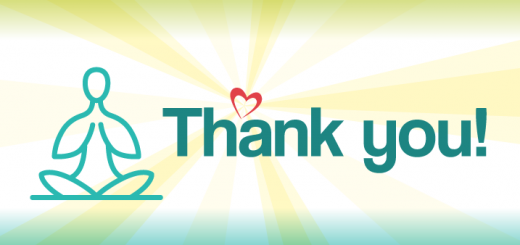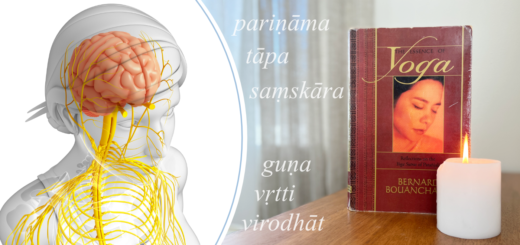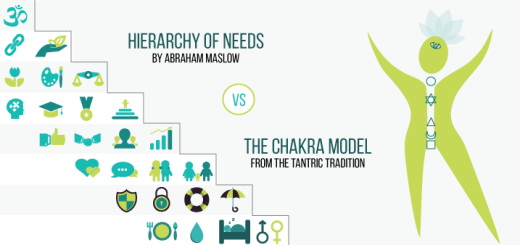Your rowdy inner family and the lasting conflict it creates
4My grandmother on my mom’s side had lost her mother early in life. When my grandmother was in elementary school, her mother was arrested by the Communist Party for some imaginary transgressions and sent into the equivalent of the Gulag, where she subsequently perished. Left without a parent, my grandmother had to drop out of school after third grade and work at a factory during World War II. She had met and married my grandfather in her late teens. He was a true believer in the Communist ideology, re-read Lenin regularly, and passionately defended the Party in arguments with his children even when all the atrocities the Party was involved in became known. Since my grandmother loved her husband, she adopted his ideology and became a true believer. It was hard for her to reconcile her personal maternal loss with her newly adopted ideology, so she dealt with it by rationalizing the Party’s actions and blocking her mother’s memory completely. She became irrationally angry if any of her children approached the subject and never spoke of her mother until she died. Whether or not my grandmother recognized it, that internal conflict affected every aspect of her life: her marriage, her mothering, her work, and her general outlook on life.
Often in life, we are confronted with conflicting narratives. They are not necessarily as prominent as my grandmother had to deal with, but they are always there. One part of us might believe one thing, and another part might disagree and perceive our experience from a different angle. Such an internal dissonance can lead to inner conflict that can be either obvious or deeply hidden. Since we have to move forward and live our lives, we have to resolve this conflict somehow, and we usually do it by suppressing one of the voices or parts. The suppressed part becomes hidden and exiled from our consciousnesses, but its hurts and internal struggles do not go away. That suppression and subsequent compensation for the unresolved issues create deep internal discontent.
The Internal Family Systems (IFS) developed by Richard C. Schwartz is an approach to psychology that recognizes that we all have many parts within us, which are not always in agreement. Our parts are like a big rowdy family with many voices and ideas about what’s best for us. Those parts can be sorted into four main categories that are remarkably similar to the four characters outlined in Jill Bolte Taylor’s book Whole Brain Living: the Anatomy of Choice and the Four Characters that Drive Our Life. The Internal Family Systems approach shows how the Four Brain Characters react to trauma and other impactful experiences in our lives.

Trauma happens on the level of Character 2 (emotional left brain), who becomes saddled with a deep emotional burden. When we are very young or lack the tools to deal with our burden, that part of us becomes an exile within our own system because those experiences are too hard for us to bear. Just like the memory of her mother for my grandmother, this exiled part is too sensitive and vulnerable to be engaged with, yet it causes deep, lasting inner ache if left unattended.
Our Character 1 (thinking left brain) and Character 3 (emotional right brain) must protect us in the face of trauma and keep us functioning in our daily lives. There can be two main coping strategies employed:
- Character 1 (thinking left brain) becomes a manager and attempts to control everything in our environment and within ourselves to keep us safe and keep things predictable. My grandmothers’ inner manager rationalized the behavior of the communists who took her mother for the sake of keeping her inner peace and had her prove her allegiance to the Party over and over again.
- Character 3 (emotional right brain) becomes a firefighter and reacts powerfully and forcefully without concern for consequences. It gets mad and loud whenever you consciously or unconsciously evoke the vulnerable exiled part. My grandmother’s inner firefighter fought her deep emotional fires by getting indignant and furious every time somebody mentioned her mother.
And underneath it all is the ever-present, all-knowing Self that knows exactly what you need and what kind of healing is necessary (Character 4). The access to the Self is obstructed by all the noise and distraction that other parts create in their effort to keep you functioning in the world.
We already intuitively grasp that if someone is extremely organized and controlling to the point of obsession (Character 1 on steroids), they might be trying to establish a sense of control over some deep unresolved issues. Or if someone gets mad at the drop of a hat or sinks into indulgence and addiction (Character 3 on steroids), they might be covering up and trying to suppress some deep emotional wounds. Nowadays, that intuitive understanding can pop up even in the most superficial interactions. For example, even on Twitter, when a random stranger is being too judgy or too angry, someone will inevitably ask: Who hurt you? We’ve grown to recognize that these tactics are probably covering up a deeply vulnerable part that the person is not ready to face or deal with.
The behavior of managers and firefighters can show up in different ways in ourselves and our students, but it often points to a burdened inner part that’s been exiled and needs to release its burden to move forward. And this is the beauty of IFS – it gives you a template to follow to help flesh out specific parts and help release those deep old burdens. Those issues show up both in the bodies and minds of our students; let’s explore them together and see how we can use IFS techniques to enhance our work!
[jetpack_subscription_form]
References
- Internal Family Systems Therapy by Richard C. Schwartz and Martha Sweezy (affiliate link)




















I always look forward to your messages in my inbox! Your insight resonates with me.
The wisdom you share enriched my teaching practice and personal healing.
Thank you very much.
Namaste
Thank you, Stephanie! It’s so wonderful to hear 🙂
Thank you for sharing such a personal story with us. And your article is, as always, very inspirational.
Thank you, Sandara! So many stories within each of us… 😉